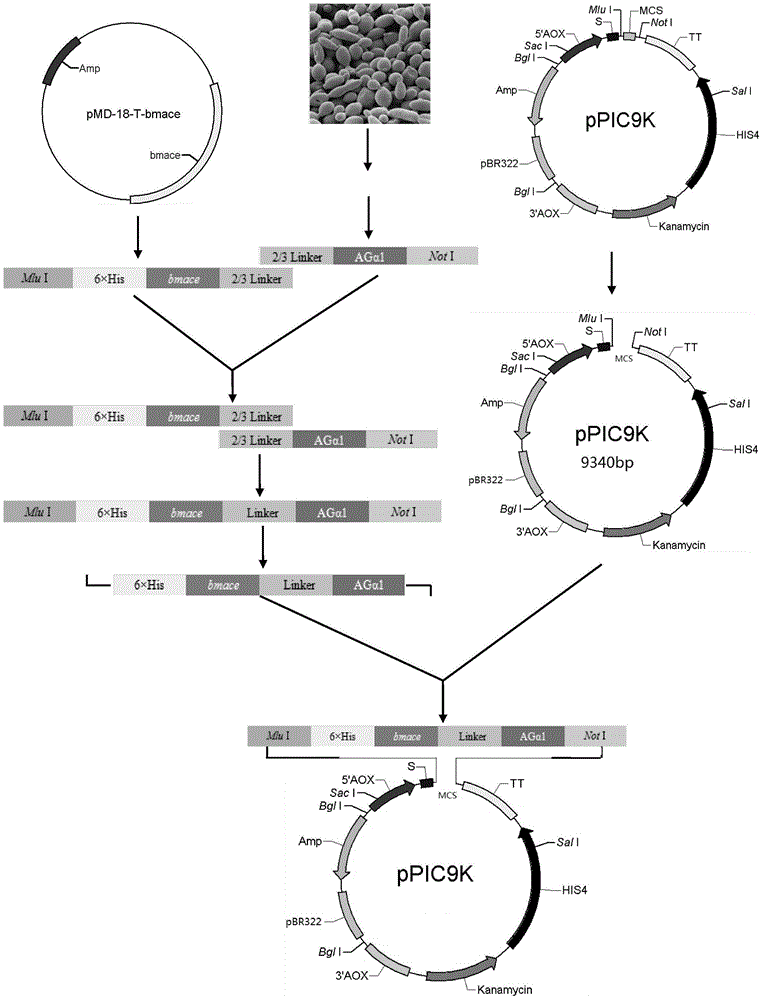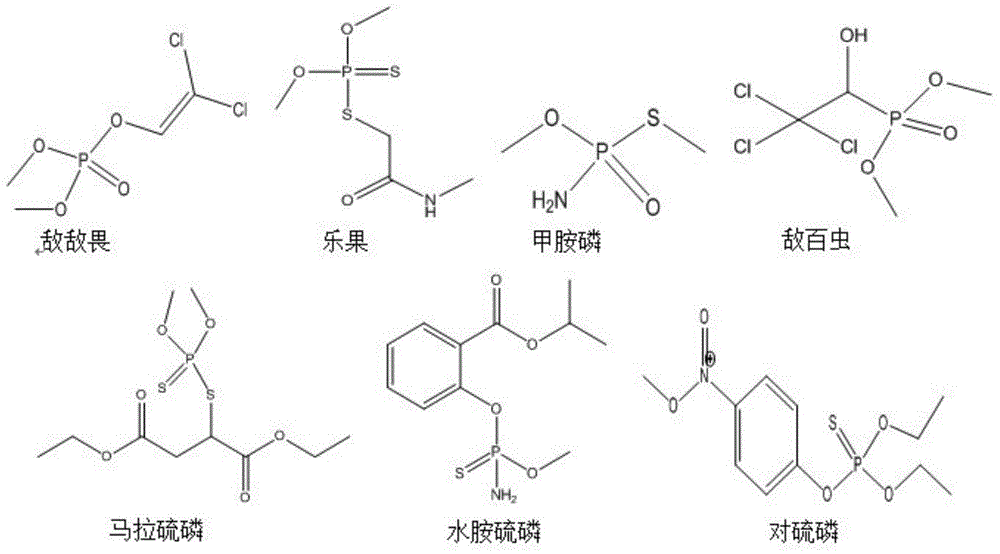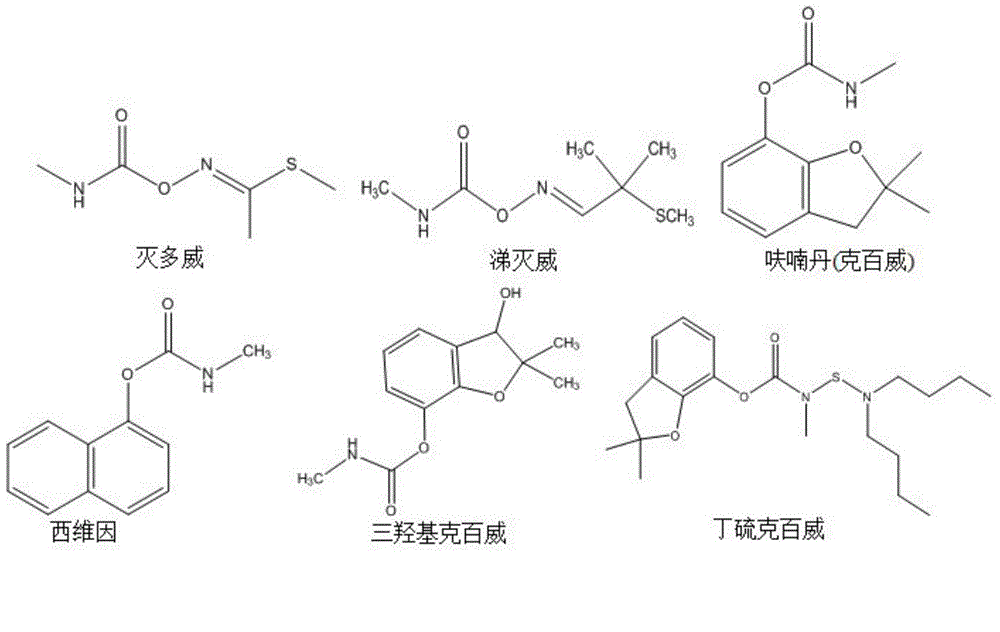Method for preparing recombinant bombyx mori acetylcholinesterase for detecting pesticide residue
A technology for acetylcholinesterase and pesticide residues, which is applied in the direction of material analysis by observing the impact on chemical indicators, and analysis by making materials undergo chemical reactions, can solve the problem of low activity of recombinant housefly acetylcholinesterase, acetylcholinesterase There are no problems such as activity and large sensitivity differences between species, and achieve the effect of low price, easy storage and short time consumption
- Summary
- Abstract
- Description
- Claims
- Application Information
AI Technical Summary
Problems solved by technology
Method used
Image
Examples
Embodiment 1
[0036] ankyrin gene AGα1 Insert it into the yeast expression vector pPIC9K to construct a surface display vector. The whole vector construction process is as follows: figure 1 shown. The constructed surface display vector was transformed into Pichia pastoris GS115, and positive recombinants were screened.
[0037] Specific steps are as follows:
[0038] 1. Use Trizol reagent to extract the total RNA of the silkworm head; use the RT-PCR kit to use the total RNA of the silkworm head as a template, Oligo(dT) 18 As a primer, the first strand of cDNA was synthesized by reverse transcription under the action of M-MuLV reverse transcriptase; the silkworm acetylcholinesterase gene was amplified by PCR using the first strand cDNA as a template bmace (The full-length sequence of the gene is shown as SEQ ID NO.1), and the bmace The gene was connected into the PMD-18-T vector, and the connection product was transformed into Escherichia coli DH5α; the recombinant plasmid PMD-18-T- b...
Embodiment 2
[0045] Preparation of recombinant silkworm acetylcholinesterase: yeast expression engineering strain GS115 / pPIC9K -bmace-AGα1 The expression was induced for 4 days, the supernatant was removed by centrifugation, and the recombinant silkworm acetylcholinesterase was obtained after the bacteria were freeze-dried. The recombinant silkworm acetylcholinesterase was subpackaged in plastic centrifuge tubes and stored under low temperature and light-proof conditions. When in use, take 0.1 g of freeze-dried solid enzyme preparation, add 50 mL of auxiliary reagent C, shake and mix evenly to make a liquid enzyme preparation.
[0046] Activity determination of recombinant silkworm acetylcholinesterase:
[0047] Take 800 μL of recombinant silkworm acetylcholinesterase, add 100 μL of substrate and 100 μL of chromogen to react for 5 min, and replace the surface-displayed recombinant silkworm acetylcholinesterase suspension with empty bacteria GS115 / pPIC9K suspension as the For the blank co...
Embodiment 3
[0053] Application of the enzyme preparation described in Example 2 in detecting pesticide residues in each sample.
[0054] Fruit: Chop a little fruit, take about 2 g of fruit pieces and put them in a 50 mL Erlenmeyer flask, add 10 mL of auxiliary reagent C, shake for 1 minute, and stand still. Take an empty centrifuge tube and add 100 μL of recombinant enzyme preparation and 2.5 mL of fruit extract, mix well and incubate for 2 minutes, then add 100 μL of auxiliary reagent A and auxiliary reagent B, and develop color for 2 to 3 minutes, observe the liquid in the centrifuge tube s color. If it appears purple, it means that the pesticide residues in the fruit have not exceeded the standard, and if it appears light red or yellow, it means that the pesticide residues in the fruit exceed the standard. Compared with the standard color chart, you can roughly know the amount of pesticide residues.
[0055] Vegetables: Rinse off the dirt on the surface of the vegetables, cut t...
PUM
 Login to View More
Login to View More Abstract
Description
Claims
Application Information
 Login to View More
Login to View More - R&D
- Intellectual Property
- Life Sciences
- Materials
- Tech Scout
- Unparalleled Data Quality
- Higher Quality Content
- 60% Fewer Hallucinations
Browse by: Latest US Patents, China's latest patents, Technical Efficacy Thesaurus, Application Domain, Technology Topic, Popular Technical Reports.
© 2025 PatSnap. All rights reserved.Legal|Privacy policy|Modern Slavery Act Transparency Statement|Sitemap|About US| Contact US: help@patsnap.com



